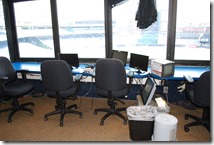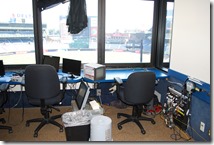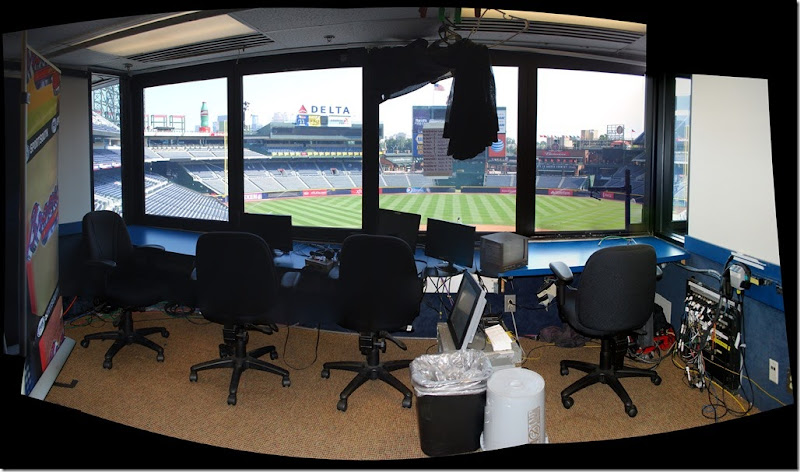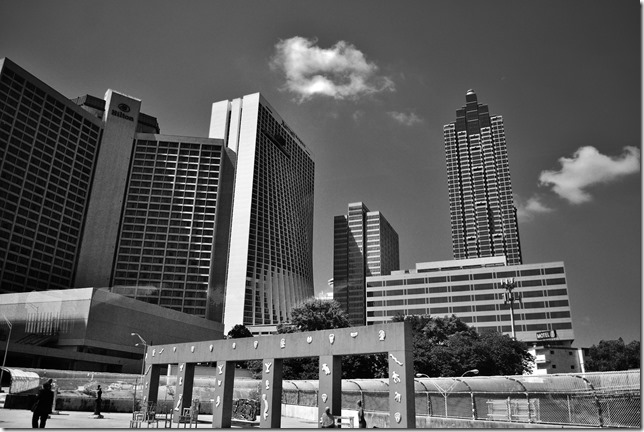A little Faux HDR
Sometimes a scene has way too wide a range of of brightness to be rendered acceptably in a digital photo. The classic situation is a dimly lit room with windows that look out on a sunlit neighborhood. You can either get the outside properly exposed or the inside, but not both. Neither most cameras nor the Internet standard JPG file format can properly handle a brightness range that exceeds 256 to 1 – that is 8 bits, or 8 stops in photo parlance.
There are techniques and tools to handle such situations. It requires several exposures, at least one that captures the world outside the window properly and lets the interior go way underexposed, and another that exposes for the interior but lets the outside be overexposed. Either special software or tools in professional-level photo editors are then used to combine these images into one which combines the best parts of each exposure into one final photo. Photos using that process are referred to as “HDR photos” – “high dynamic range photos”.
If you don’t have the software tools for processing HDR images, nor the experience for using them, you can’t handle such photo opportunities. Well, that isn’t necessarily so. If you are willing to settle for photos that are adequate but not masterpieces, Windows Photo Gallery and a little bit of planning can get you there.
Here is my example: The TV announcers booth at Turner Field in Atlanta. I wanted to show the room as well as the view that the announcers see. Well, my camera lens could not cover all of the room – not an unusual situation, and the range of light from the interior to the outside was more than could be shown in any single photo. I did something that would make my photo friends cry: I set the camera on automatic and the zoom lens to the widest setting. Then I took a couple of photos centered on the windows, and another three with the camera aimed lower. You can see the photos here.



These are just handheld shots and you can see they were not taken in some consistent order. The camera selected the aperture, shutter speed, and ISO setting and for these five exposures these setting are:
1: f/5.6 1/125s ISO 100 – 2: f/6.3 1/160s ISO 100 – 3: f/3.5 1/60s ISO 200 – 4: f/3.5 1/125s ISO 180 – 5: f/3.5 1/125s ISO 200.
Oh, I can see the tears in the eyes of my friends. This is not the way to do it! But hey, I was “working on assignment for this blog”! The little photos here are full frame. In Windows Photo Gallery I selected these five and then clicked Create > Panorama. No other adjustments are possible in this process, Photo Gallery does it all by itself. Here is what this clever, free photo editor came up with – here the result just at it came out, no additional adjustments:

Photo Gallery stitched the photos together and adjusted the exposure so the combined photo looks pretty good. And here the cropped photo with some exposure, shadow and highlight adjustments made:
Not shabby at all, wouldn’t you say? Oh, yes, this photo would be much better if I had taken the time, used a tripod, set the exposures properly used the same aperture and used a good HDR program. But then I could not have demonstrated to you that with just a bit of foresight (multiple exposures) you can make do and come up with acceptable results.
.:.






 On the left side in the Stitch panel click the selection button and click Rotating Motion.
On the left side in the Stitch panel click the selection button and click Rotating Motion.